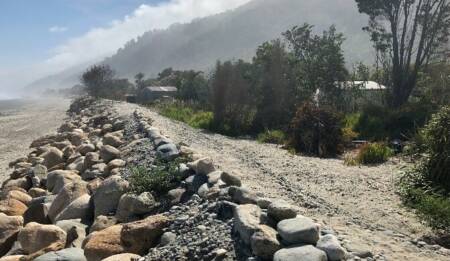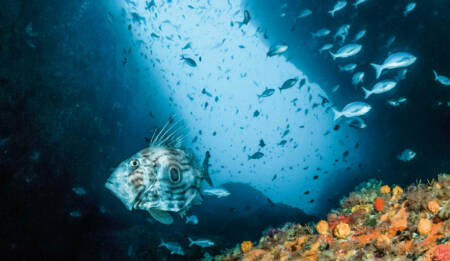The Nippon Foundation - GEBCO Seabed 2030 Project
Seabed 2030 is an ambitious international collaborative project to map the entire sea floor of the world by 2030. It aims to do this by combining all existing bathymetric (depth to the seafloor) data into a unified database; encourage efforts to collect and submit new data; and generate maps that are freely available to the public at a global resolution never achieved before.

Background
Currently, the topography of the ocean floor is less well known than the surfaces of Mercury, Venus, Mars, and the moon. And yet, knowledge of the depth and shape of the seafloor is crucial for understanding the ocean movement patterns that distribute heat between the tropics and the poles - a key component of Earth’s climate system.
The Seabed 2030 project is a collaboration between The Nippon Foundation of Japan and the General Bathymetric Chart of the Oceans (GEBCO). It aims to combine all existing bathymetric data into a unified database, promote efforts to collect new data on the ocean floor, and to generate maps of ocean floor features.
Project details
The work is being coordinated through four regional data centres around the globe, with NIWA, GNS Science, and Land Information New Zealand (LINZ) jointly governing the South and West Pacific Ocean Regional Data Assembly and Coordination Centre.
The South and West Pacific centre is based at NIWA in Wellington and looks after an area equivalent to a quarter of the world’s oceans - some 124 million square kilometres. The regional centres are responsible for championing mapping activities; assembling and compiling bathymetric information; and collaborating with existing mapping initiatives in their regions.
Currently less than 20% of the world’s ocean floor is adequately mapped. The project is aiming for the bold target of 100% coverage by 2030.
Detailed measurements of ocean depth are also crucial for modelling tsunami development and the resulting inundation of coastal areas. The depth of the ocean floor affects tides, fishing resources, sediment transport, underwater geo-hazards, cable and pipeline routing, mineral extraction, oil and gas exploration and development, infrastructure construction and maintenance and much more.
What they want to achieve
The project aims to map the entire globe's sea floor of the world by 2030. It will do this by combining all existing bathymetric (depth to the seafloor) data into a unified database; encourage efforts to collect and submit new data; and generate maps that are freely available to the public at a global resolution never achieved before.
Engagement
The Seabed 2030 Project team is aware that bathymetric data is likely to exist in a range of locations and encourages those holding such information to submit it to help fill the significant gaps.
Academics, government agencies, the fishing industry and the shipping industry are all likely to hold a range of useful bathymetric information.
With so little of the ocean mapped, any existing data can help complete the map. The GEBCO global map already combines data from a variety of sources and instruments (e.g. single beam, multibeam, ENCs, seismically derived data, satellite altimetry, LIDAR). Regardless of the instruments used, spatial resolution, age or format – your data can help!
UNESCO’s Intergovernmental Oceanographic Commission announced the Seabed 2030 Project as one of the first Actions officially endorsed as a UN Decade of Ocean Science programme. As part of the Call for Decade Actions governments, organisations and individuals are invited to: contribute data and resources to Seabed 2030; support the vital global effort; and help explore the planet's final frontier.
Resource





